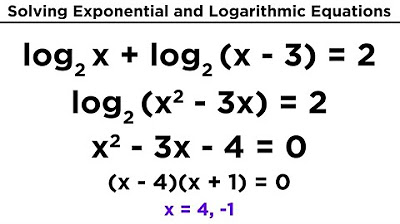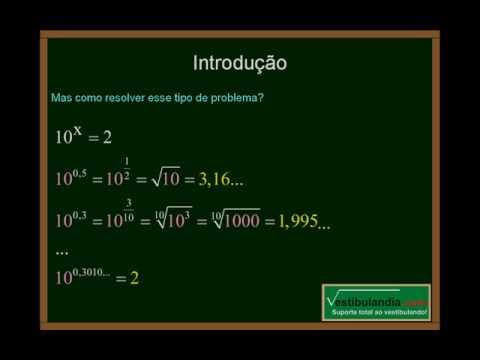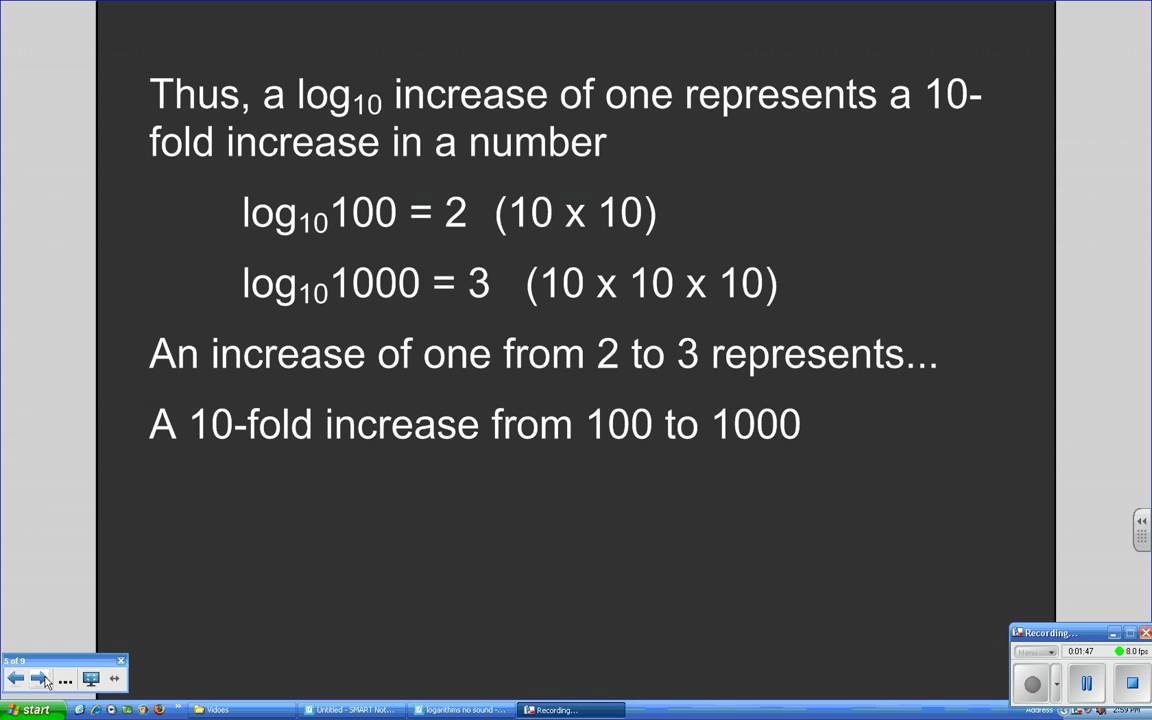PROPRIEDADES DOS LOGARITMOS
Summary
TLDRIn this educational video, the teacher explains key properties of logarithms, such as the logarithms of products, quotients, powers, and the technique of changing bases. Using examples like calculating the log of 72 and 1.2, the video demonstrates step-by-step how to decompose numbers, apply logarithmic properties, and solve equations. The teacher highlights the importance of understanding these techniques for solving logarithmic problems efficiently and provides additional resources for viewers to practice. The lesson is both informative and practical, aimed at helping students strengthen their grasp of logarithmic concepts.
Takeaways
- 😀 Logarithms are a fundamental mathematical concept, and it's essential to understand their properties for solving problems.
- 😀 The script explains how to calculate logarithms using known values of log 2 and log 3 to find log 72, applying basic logarithmic properties.
- 😀 The 'caracol' technique, which involves finding the logarithmic value using base 10, is helpful but may not always work for all cases.
- 😀 Decomposing numbers into prime factors, like decomposing 72 into its prime factors (2^3 * 3^2), is an effective method to solve logarithmic expressions.
- 😀 When dealing with multiplication of logarithms, you can apply the property that the logarithm of a product is the sum of the individual logarithms.
- 😀 Using the power rule (the 'Tombo' rule), you can simplify expressions by moving the exponent to the front, allowing for easier calculations.
- 😀 In cases where you have a division inside the logarithm, like log(1.2), the logarithm of a quotient is the difference of the logarithms.
- 😀 For logarithms involving decimals, converting them into fractions can make the calculations easier, as demonstrated with log(1.2).
- 😀 The rule for logarithms of a quotient allows you to subtract the logarithms when dealing with a fraction inside the logarithmic expression.
- 😀 Changing the base of a logarithm (using the base conversion formula) is essential when the base of the logarithm doesn't match the given base, like in log base 6.
Q & A
What is the purpose of the 'Caracol' technique mentioned in the script?
-The 'Caracol' technique is a method used to calculate logarithms, but it is not always applicable, especially when the base and the logarithm need to be transformed to the same base.
Why can't we directly apply the 'Caracol' technique for calculating the log of 72 in the script?
-The 'Caracol' technique cannot be applied because the base 10 and the logarithm of 72 need to be transformed to the same base to solve the equation. The direct application doesn't work due to the need for base transformation.
What method does the speaker suggest when the 'Caracol' technique is not applicable?
-The speaker suggests decomposing the number into prime factors, which allows for applying logarithmic properties to solve the problem.
What are the prime factors of 72 as discussed in the video?
-The prime factors of 72 are 2 x 2 x 2 x 3 x 3, which can also be written as 2^3 x 3^2.
How does the speaker use the properties of logarithms to calculate log(72)?
-The speaker uses the property that the logarithm of a product is the sum of the logarithms of the factors. This is applied by breaking down log(72) into log(2) + log(2) + log(2) + log(3) + log(3).
What is the final result of log(72) using the provided logarithm values for log(2) and log(3)?
-The final result of log(72) is 1.86 after applying the given logarithmic values: log(2) = 0.30 and log(3) = 0.48.
How does the speaker simplify the calculation of log(72) by using powers?
-The speaker expresses 72 as 2^3 x 3^2 and applies the logarithmic property for powers, which involves bringing the exponent in front of the logarithm. This leads to the simplified expression 3 × log(2) + 2 × log(3).
What is the alternative method suggested to calculate log(1.2), and why is it preferred?
-The speaker suggests transforming 1.2 into a fraction (12/10) and then applying the logarithmic property for division, which involves subtracting the logarithms of the numerator and denominator.
Why is the decomposition of 1.2 into prime factors not applicable in this case?
-Decomposition of 1.2 into prime factors is not possible because it is a decimal. Instead, the speaker transforms it into a fraction to handle the calculation.
How does the speaker handle log(10) when calculating the log of a fraction?
-Since log(10) equals 1, the speaker simplifies the expression log(12) - log(10) to just log(12) - 1 when calculating log(1.2).
What strategy does the speaker use to calculate log(4) in base 6, and how is it different from the previous cases?
-For log(4) in base 6, the speaker uses the change of base formula, transforming the logarithm into a fraction with log(4) in the numerator and log(6) in the denominator, both in base 10.
Outlines

このセクションは有料ユーザー限定です。 アクセスするには、アップグレードをお願いします。
今すぐアップグレードMindmap

このセクションは有料ユーザー限定です。 アクセスするには、アップグレードをお願いします。
今すぐアップグレードKeywords

このセクションは有料ユーザー限定です。 アクセスするには、アップグレードをお願いします。
今すぐアップグレードHighlights

このセクションは有料ユーザー限定です。 アクセスするには、アップグレードをお願いします。
今すぐアップグレードTranscripts

このセクションは有料ユーザー限定です。 アクセスするには、アップグレードをお願いします。
今すぐアップグレード5.0 / 5 (0 votes)






